- HOME
- Technical Information
- CAE Analysis, Analysis and Processing Technologies
- Analysis Technologies
- Image Analysis
- Image Analysis Case Study
Image Analysis Case Study
Orientation Tensor for Carbon Fibers in PPS Resin
Three-dimensional fiber orientation data obtained through X-ray CT is analyzed to determine the orientation tensor (i.e. to quantify the proportion of fibers in a direction of the X, Y, and Z planes).
If the fibers contained in a required range cannot be observed by X-ray CT, the orientation tensor cannot be determined. Fibers in resins are generally observed in cases where glass fibers with high electron absorption coefficients are blended into resins with low electron absorption coefficients.
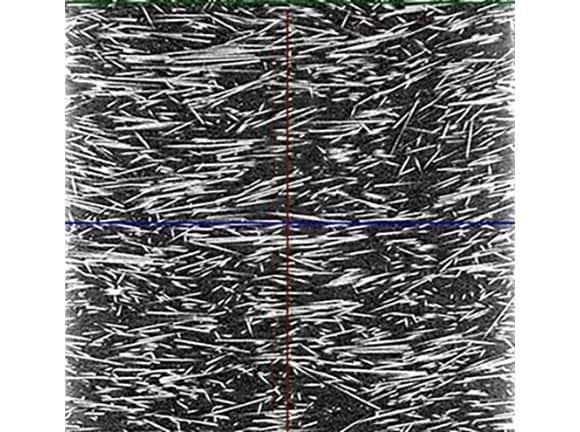
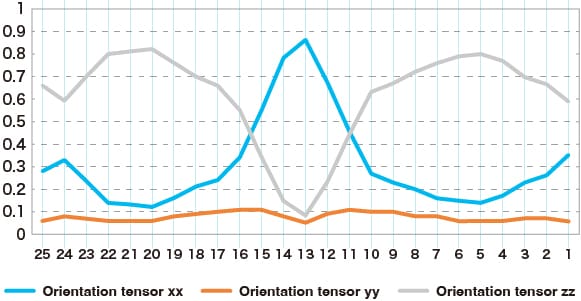
The polyphenylene sulfide (PPS) resin in the Toray lineup has a higher X-ray absorption coefficient than conventional PP (polypropylene) and PET (polyethylene terephthalate). In addition, if carbon fiber is used as the fiber, the size relationship of electron absorption coefficients is reversed, resulting in the presence of fibers with a small electron absorption coefficient in a resin with a large electron absorption coefficient.
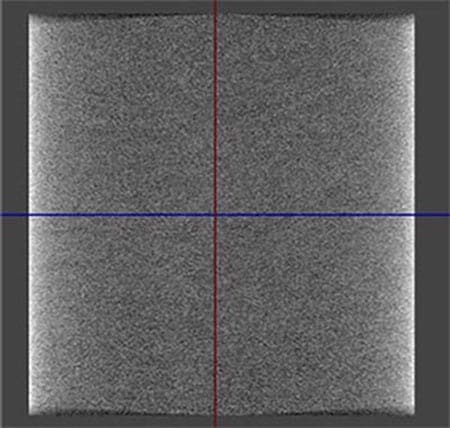 Carbon fibers in PPS using general-purpose X-ray CT
Carbon fibers in PPS using general-purpose X-ray CT As shown in the image to the right, the fibers cannot be observed when using general-purpose X-ray CT.
Toray has discovered technologies that can analyze the orientation tensor even when observing fibers in cases such as this.
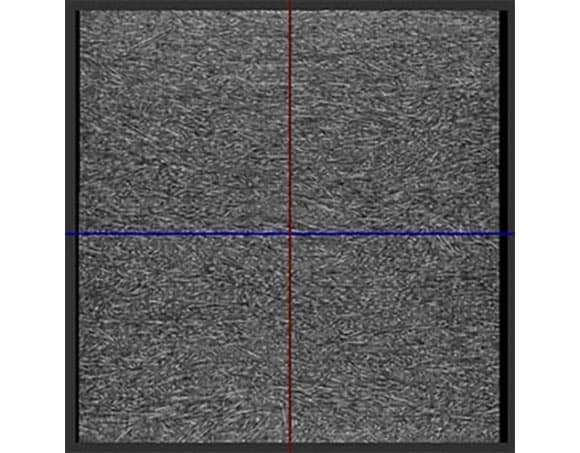
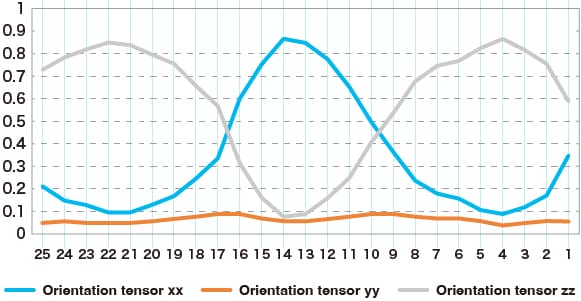
By accumulating technologies related to X-ray CT used to observe resin products and create analyses that lead to the development of resin products, Toray is solving issues such as not being able to see or evaluate fibers.